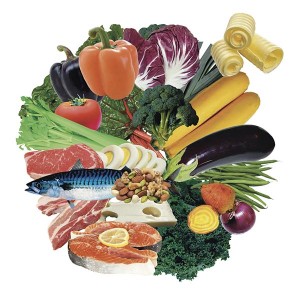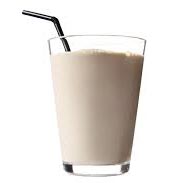There are many ways to classify food. The good old macronutrient approach is primarily linked with energy production: just anybody will tell you that you need to eat carbs to have energy (never mind that it conflicts with the widespread knowledge that fat is very calorie-dense, with almost twice the calories of protein or carbs for the same weight).
This energy-oriented approach makes sense if you consider that for a long time the main concern of humankind was survival and getting enough calories was a matter or life and death.
 The micronutrient approach started with the discovery of vitamins. While this scientific breakthrough opened new horizons in nutrition, it also created the enduring myth that sugar equals vitamins, because fruits were the first foods to be associated with vitamins.
The micronutrient approach started with the discovery of vitamins. While this scientific breakthrough opened new horizons in nutrition, it also created the enduring myth that sugar equals vitamins, because fruits were the first foods to be associated with vitamins.
Since then we have discovered that, in fact, many vegetables are richer in vitamins than fruit.
Macronutrients
Apart from their capacity to produce energy, macronutrients play important roles in our body. This is less known:
- Proteins are chains of amino acids. They are responsible for the largest array of functions in our body for structure, hormones, enzymes, antibodies… We are able to synthesize many of the 20 amino acids we need; the rest must be supplied by our food and are referred to as essential amino acids.
- Fats have important structural functions in our body, particularly in cell membranes. We can synthesize most of the fats we need. There are only two types of fat that our body requires but is unable to build: these are called essential fatty acids and must be obtained through food.
- Carbohydrates are the main components of plants; they include sugars (smaller molecules), starches (long chains of sugars) and dietary fiber (indigestible chains of sugar). Their reputation is for providing energy rapidly, but in fact they are not uniquely qualified in that respect: fats and proteins can produce energy too.
Micronutrients
It is now well established that our bodies need more than just calories to thrive. We also rely on many substances present in small quantities in our food to grow, repair and regulate ourselves: micronutrients, electrolytes and minerals (or elements). We group them under the term “micronutrients” or “nutrients” for short.
Nutrients are so numerous that it is impossible to list them all. They include vitamins, but are not, by any means, limited to them.
Vitamins can be the tree that hides the forest: by focusing on vitamins only, we expose ourselves to the serious consequences of deficiency in the other nutrients.
Eat a Rainbow of Food!
 |
 |
|
Eat this… |
… or that??? |
Given the dauntingly vast quantity of indispensable nutrients, it is impossible, as of today, to offer an exhaustive list of recommended foods. And it is extremely presumptuous (and sooooo misguided) to think that you can put all the necessary nutrients in one gooey greyish beverage and feed on it for the rest of your life without adverse consequences!
At this point of nutritional knowledge (or lack thereof), our best bet is to consume the widest possible variety of foods, in order to benefit from the widest possible variety of micronutrients.
(To be continued…)
If you found this post interesting,
sign-up to be notified when there is a new post on our blog.
